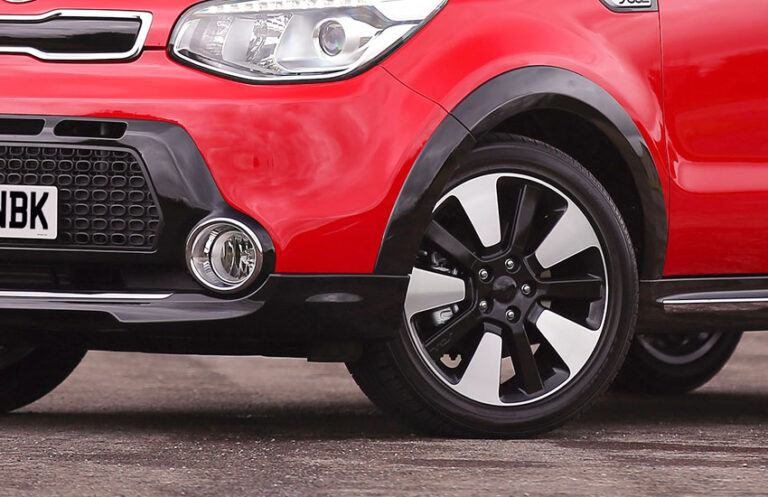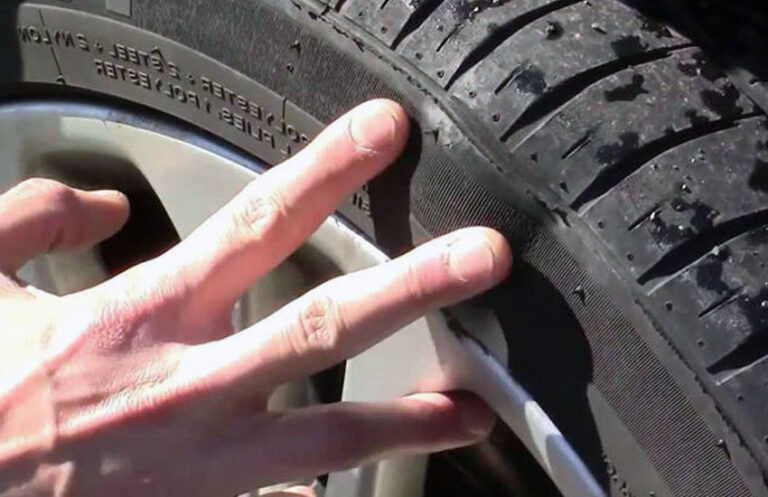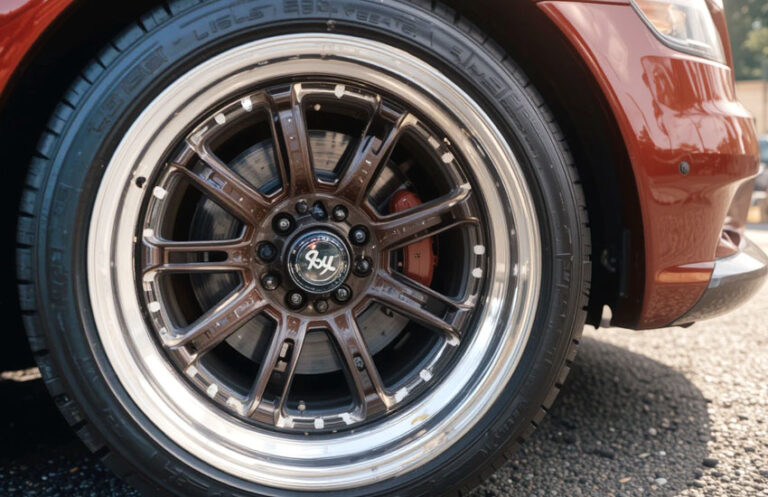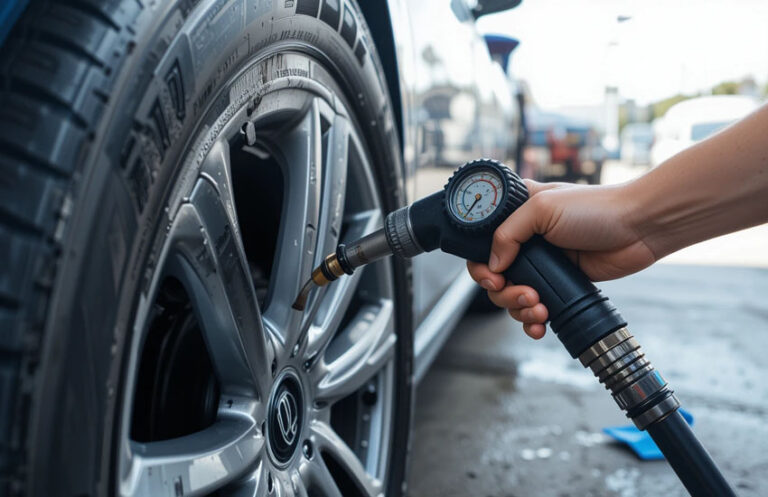As an Amazon Associate, I earn from qualifying purchases at no extra cost to you.
How Often Should Tires Be Rotated to Stay Safe and Save Money?
You might not think about your car tires often, but they work hard every day. You drive to work, school, or take road trips, and your tires carry you everywhere. So, here’s the truth: you should rotate your tires every 5,000 to 8,000 miles. This simple step can make your tires last longer and help you stay safe on the road. In this article, you’ll learn the full guide on when to rotate your tires, why it matters, and how to make sure you’re doing it right. It’s easier than you think and really worth it.
Why Tire Rotation is So Important
Tire rotation is not just something car shops tell you to do — it’s truly important for your safety and for your wallet. When you drive, your tires don't wear out evenly. Front tires carry more weight and do most of the steering and braking. This means they wear out faster than back tires. If you don’t rotate them, your tires can wear unevenly and lose grip, which can lead to dangerous driving, especially in wet or snowy roads.
When your tires are worn out unevenly, your car may shake or pull to one side. This can also mess with how your car handles, making it harder to control. That's why tire rotation is important. By switching the front and back tires regularly, you make sure they wear down more evenly. This helps all four tires last longer and keeps your drive smooth and safe.
You also save money. New tires are expensive. If you rotate your tires, you won't need to buy new ones as often. Also, tires that are evenly worn give you better gas mileage. That means fewer trips to the gas station and more money in your pocket.
Tire rotation is also a big deal for keeping your warranty. Most tire brands require you to rotate your tires regularly if you want to keep the warranty active. If you skip it, and the tires wear out too fast, the company might not help you.
Another benefit is spotting problems early. When you rotate your tires, you or your mechanic can check for any signs of damage like nails, bubbles, or cracks. Catching these problems early can save you from bigger trouble later.
So, tire rotation might sound small, but it gives you big benefits. It helps with safety, saves you money, and makes your car last longer.
- Keeps your drive smooth and safe
- Helps tires wear evenly
- Saves money on gas and new tires
- Keeps your tire warranty valid
- Helps find tire problems early
How Often Should You Rotate Your Tires?
You should rotate your tires every 5,000 to 8,000 miles. This is a general rule that works for most cars. But the best thing to do is to check your owner’s manual. Your car’s manual will give the exact number based on the type of vehicle and tires you have. Some cars may need it more often, especially if they carry heavy loads or if you drive on rough roads a lot.
Think of tire rotation like going to the dentist or getting a haircut. It's just a part of good care. If you drive every day, you can hit 5,000 miles pretty fast — maybe in just a few months. Even if you don't drive much, you should still rotate them at least twice a year to keep things even.
Some people think they only need to rotate tires when they look worn out, but by that time, it's too late. Once tires wear unevenly, you can't fix it. So it’s better to rotate them regularly before the wear shows up.
The best way to remember it is to rotate your tires every time you get an oil change. Many oil changes are done around 5,000 to 7,500 miles. Doing both at the same time helps you keep on schedule.
There are also some signs that tell you it's time for a tire rotation, like your car shaking when you drive, a humming sound from the tires, or if your car feels like it's pulling to one side. If you notice any of these, don't wait — get your tires rotated soon.
Electric vehicles (EVs) may also need more frequent tire rotations. EVs are heavier because of their batteries, and that can make tires wear out faster. So, if you drive an EV, rotate the tires more often.
If you don't know when you last rotated your tires, it's better to do it now and then follow a schedule.
- Rotate tires every 5,000 to 8,000 miles
- Check owner’s manual for your car’s needs
- Do it every oil change to stay on track
- More often if you drive on rough roads or have an EV
- Watch for signs like shaking, pulling, or noise
What Happens If You Don’t Rotate Your Tires?
Skipping tire rotation might not seem like a big deal at first, but over time, it causes real problems. Your tires will start to wear unevenly, and that affects the way your car drives. For example, your front tires might wear out faster because they handle the steering and most of the braking. That uneven wear can make your car feel rough or even unsafe on the road.
When your tires wear out unevenly, it can cause your car to pull to one side or shake at high speeds. This doesn't just make driving uncomfortable — it's also dangerous. You might lose grip in bad weather, like rain or snow, which could lead to an accident.
You'll also end up spending more money. Worn-out tires need to be replaced sooner. And if you replace just one or two tires, your car still won't drive smoothly. Uneven tires can damage your suspension and steering parts too, and those repairs are very expensive.
Tires with uneven wear also reduce your gas mileage. When your tires don't roll smoothly, your engine has to work harder. That means more fuel used and more money spent at the pump.
Even tire warranties can be canceled if you don't rotate your tires. Many tire companies ask for proof that you rotated the tires regularly. If you didn't, they won't help you if the tires wear out too fast.
Not rotating your tires is like skipping oil changes. You might not notice the harm right away, but problems will show up later — and they will cost more.
- Tires wear unevenly and faster
- Car might shake, pull, or feel unsafe
- You'll spend more on new tires and repairs
- Worse fuel economy
- May lose tire warranty benefits
How to Rotate Tires at Home Safely
Rotating your tires at home can save money and isn't too hard if you follow the steps carefully. First, make sure you have the right tools. You'll need a car jack, jack stands (not just the jack), a lug wrench, and your car’s manual.
Start by parking your car on a flat surface, like your driveway. Put the car in park and use the parking brake. Loosen the lug nuts on all four wheels while the car is still on the ground, but don't remove them yet.
Next, use the jack to lift one corner of your car and place a jack stand under it for safety. Never crawl under a car that is only held up by a jack. Repeat this for all four corners, so the whole car is up on jack stands.
Now, you can remove all the tires. The rotation pattern depends on your car type. If your car is front-wheel drive, move the front tires to the back and switch sides — front-left goes to rear-right, and front-right goes to rear-left. The back tires move straight forward without switching sides.
For rear-wheel drive cars, the back tires go to the front but switch sides. The front tires move to the back without changing sides.
If your car is all-wheel drive, it’s best to use a diagonal cross pattern — all four tires switch spots and sides.
After placing the tires in their new positions, put the lug nuts back on with your fingers. Lower the car slowly and then tighten the nuts with the wrench. Tighten each nut in a crisscross pattern for better grip.
Check the air pressure in all the tires and adjust if needed. Also, check the tire tread for any signs of damage or uneven wear.
Doing it yourself saves money and gives you a better idea of your tire's condition. But always be safe and take your time.
- Use a jack, jack stands, and lug wrench
- Rotate based on your car type (FWD, RWD, AWD)
- Always work on a flat surface
- Check tire pressure and tread before finishing
- Tighten lug nuts properly for safety
When Should a Mechanic Rotate Your Tires?
While rotating your tires at home is possible, sometimes it's better to let a mechanic do it. If you don't have the tools or space, or if you’re not sure how to do it safely, a mechanic can help. Tire shops have proper lifts, tools, and they can rotate your tires in just 30 minutes.
Also, if your car has tire pressure sensors or needs special patterns, a mechanic will know what to do. Some cars have tires that are different sizes in front and back, or they are directional (they roll only one way). These need special care that a mechanic understands.
Mechanics also check other parts while rotating your tires. They may notice things like worn-out brakes, loose suspension parts, or tire damage that you might miss. This can save you from future problems or even accidents.
Sometimes tire rotation is free with other services like oil changes. Many shops include it in their maintenance package, which saves time and money.
Another reason to let a mechanic handle it is if your tires have uneven wear already. A mechanic can tell you why it's happening and if something else is wrong with your car.
- Go to a mechanic if you lack tools or space
- Mechanics handle tire sensors and special tire types
- They check brakes and suspension at the same time
- May include tire rotation free with other services
- Helps fix or stop uneven wear issues
How to Keep Track of Tire Rotation Schedule
The easiest way to keep track is to write it down or use your phone. After each tire rotation, mark the date and mileage. Set a reminder on your phone for the next rotation. That way, you won't forget.
Many people forget when they last rotated their tires, and that leads to uneven wear. You can also use a small notebook in your glove box to write down the date, mileage, and what rotation pattern was used.
There are also apps for car maintenance. Some apps can even track oil changes, tire pressure, and send reminders. These are great tools if you want to stay organized without extra effort.
If you go to a mechanic, ask them to write the rotation on your receipt. Keep that receipt in a folder or take a photo of it. That way, you'll have proof if you ever need it for a tire warranty.
It's also smart to match tire rotation with other car tasks. For example, every time you get an oil change, ask if your tires were rotated. This makes it easy to remember and keeps your car running smoothly.
- Use phone reminders or a notebook
- Track date, mileage, and rotation pattern
- Use car maintenance apps for easy tracking
- Keep receipts from shops for warranty proof
- Match rotation with oil changes or other tasks
Final Thoughts
Taking care of your tires is not hard, and rotating them on time can save you a lot of money and trouble. It helps your tires last longer, keeps your car safer, and makes your drive smoother. Whether you do it at home or go to a shop, what matters most is staying on a regular schedule. A small effort now can stop big problems later. So don't wait — check your mileage and rotate your tires if it's time. Your car will thank you, and so will your wallet.
Frequently Asked Questions (FAQs)
Is it really necessary to rotate tires every few thousand miles?
Yes, it is. Rotating your tires every 5,000 to 8,000 miles helps them wear evenly. If you skip it, your tires may wear out faster on just one side, which makes your ride unsafe and uncomfortable. Uneven tires can also damage your car's suspension and affect your fuel mileage. Even if everything seems fine, tire wear happens slowly, and you won't notice it until it's too late. Regular rotation helps your tires last longer and keeps your car running better.
Can I rotate my tires without special tools?
You can, but you need some basic tools to do it safely. A jack, jack stands, and a lug wrench are needed. Never try to rotate tires using only a car jack without stands because it's dangerous. If you don't feel comfortable or don't have these tools, it's better to visit a tire shop. Many mechanics can rotate tires quickly and may even include it with other services like oil changes. Doing it right is more important than doing it yourself.
Is it okay to rotate tires only once a year?
It's better to do it more often. Once a year may not be enough unless you drive very few miles. Most drivers hit 5,000 to 8,000 miles in a few months. If you wait too long, your tires could wear unevenly and become unsafe. If you're not sure, a good rule is to rotate your tires every time you change your oil. That way, you don't have to think about it too much. Twice a year is a safer goal for most people.
Do I need to rotate tires on an all-wheel drive vehicle?
Yes, you do. In fact, it’s even more important for all-wheel drive (AWD) vehicles. AWD systems send power to all four tires, and if one tire wears faster than the others, it can damage the system. This can lead to expensive repairs. AWD vehicles usually need a cross-rotation pattern to make sure all tires wear evenly. Check your owner's manual for the right pattern and timing, but usually, every 5,000 to 7,000 miles is best.
Is it bad if I rotate tires the wrong way?
Yes, rotating tires the wrong way can cause problems. If your car has directional tires or if you don't follow the right pattern for front, rear, or all-wheel drive, your tires may wear unevenly. This can affect handling and safety. It can also cancel your tire warranty. Always check your car manual or ask a mechanic if you're not sure. Getting the pattern right makes a big difference in tire life and performance.
Can rotating tires fix uneven wear?
Rotating tires helps prevent uneven wear, but it cannot fix it once it's already bad. If one tire is already more worn than the others, rotating them won't make it even again. It's still a good idea to rotate, but also ask a mechanic to check if there's another problem, like alignment or suspension issues. Sometimes uneven wear means something else is wrong with your car.
Is it okay to only rotate front tires?
No, it's not okay to only rotate the front tires. Tire rotation needs to include all four tires to be effective. Just rotating two tires doesn't solve the problem of uneven wear. All four tires need to take turns being in the front and back, so they wear down the same way. If you skip the rear tires, they will stay in one position and wear differently, which could cause driving issues.
Do I need to balance tires when rotating them?
Not always, but it's a good idea. Tire balancing helps your tires spin smoothly without shaking. If your tires are not balanced, your steering wheel might shake, or your ride might feel rough. While rotating your tires, many shops will check balance at the same time. It doesn't cost much and can make your drive feel much better. If your car shakes or makes noise after a rotation, ask for a balance check.







